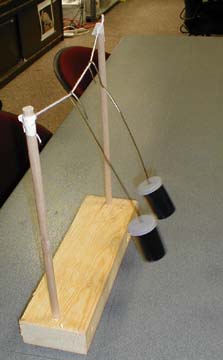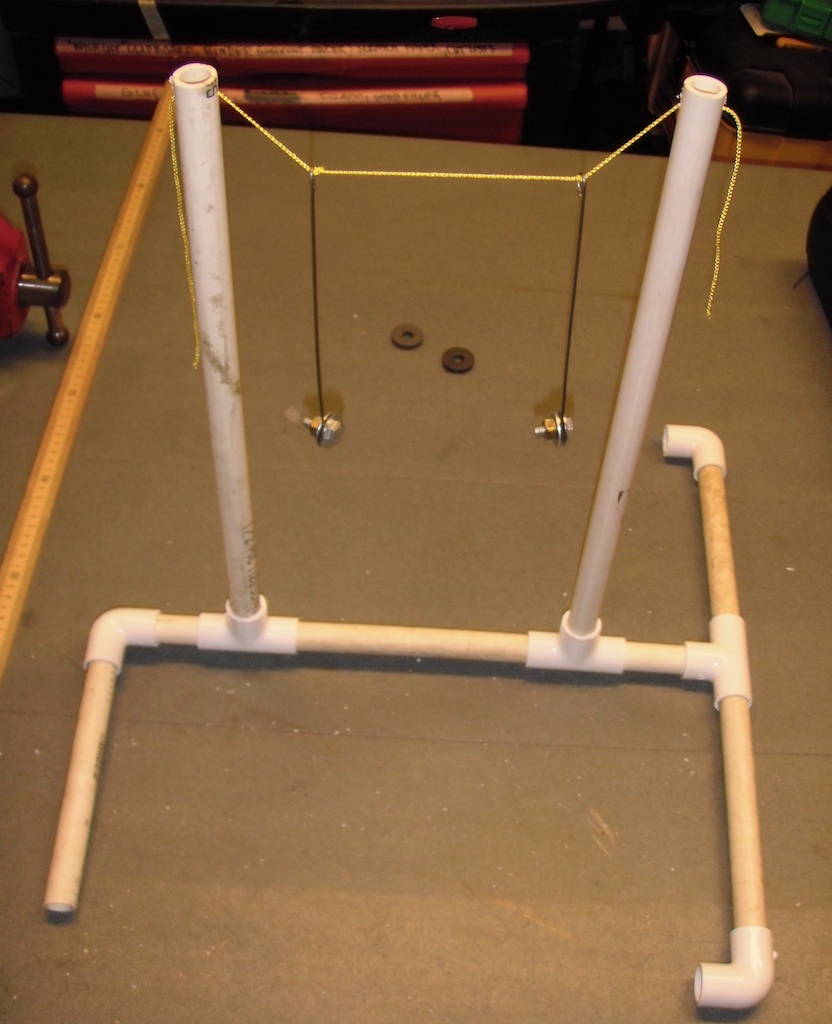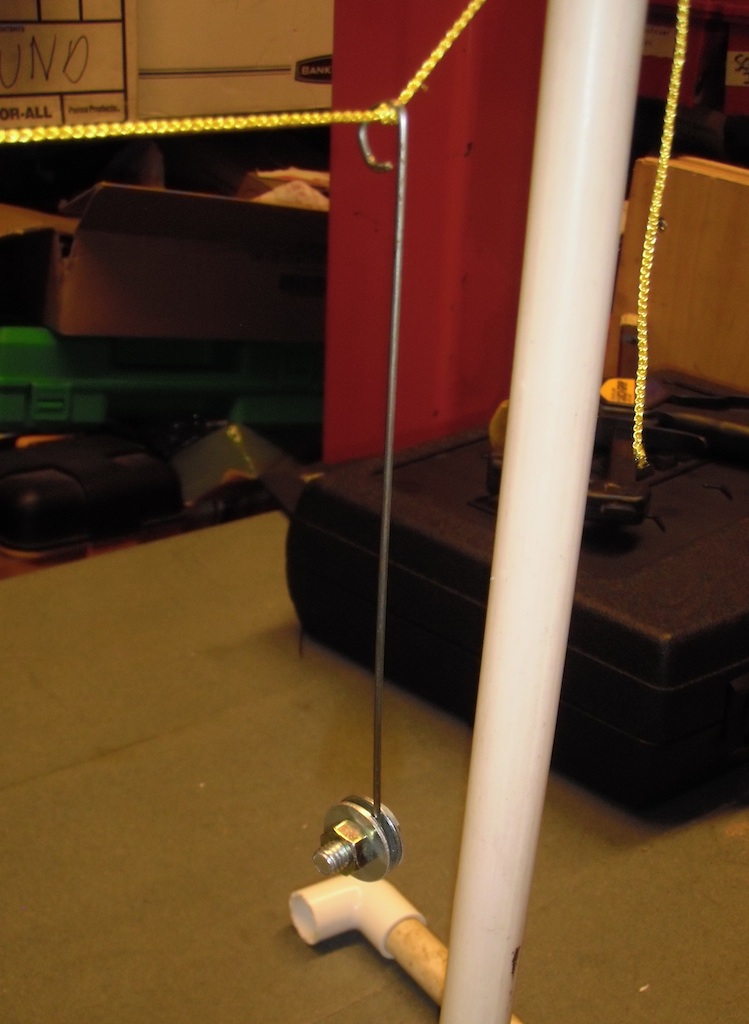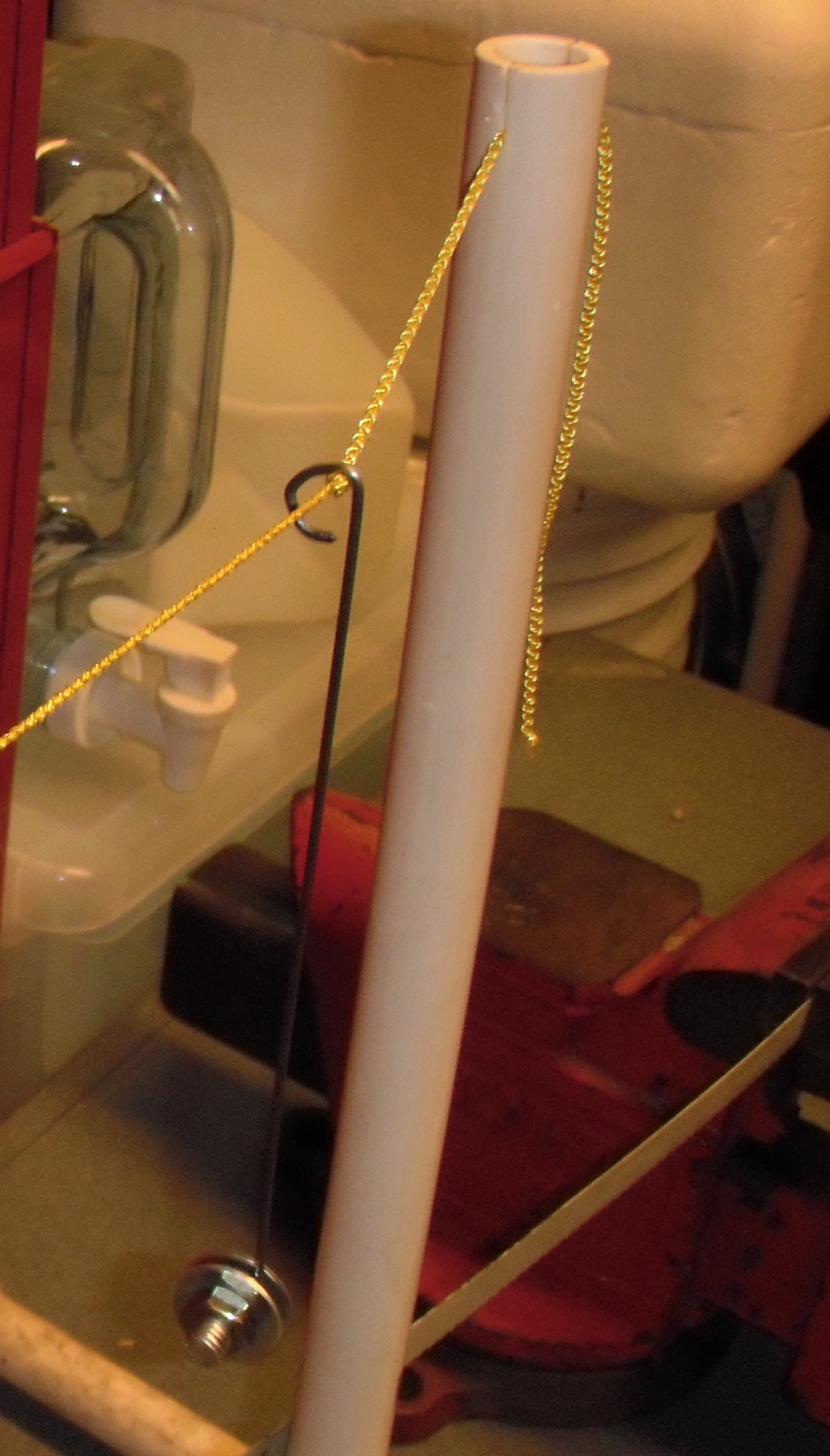
Coupled pendulums made of film cans full of clay
Working the swing shift
Two pendulums with the same period can be coupled together so that they pass motion and energy back and forth.

Assembly
Build the Coupled
Resonant Pendulums Snack. See the photo
above.
Suspend two film cans mostly full of clay from a string using bent
pieces of coathanger wire.
Take care, the wires should be the same length and the film cans
should be filled to the same height with clay.
Test your construction, pull both film cans to one side and let them
go. They should continue to swing together as shown above for 20
swings or so.
If they don't, check the lengths of each pendulum and the amount of
clay in each can.
To do and Notice
Start one pendulum swinging.
Notice what happens.
The stationary pendulum starts to oscillate.
Its motion builds up as the motion of the pendulum you started gets
smaller.
Eventually, the pendulum you started will stop, while the other
pendulum has all the motion.
The process will continue and the stopped pendulum will begin to
move.
More Explorations
Start both pendulums together. Pull them both to the side and let them go.
Notice that they continue to move together.
Pull one pendulum to one side and the other pendulum to the other side.
Let them go together. Notice how they keep moving opposite each other.
What's Going On
As they swing each pendulum pulls on the other making its neighbor swing more or less.
Notice the motion of the string that couples the
pendulums.
As one pendulum swings back and forth it moves the string which pulls
on the other pendulum.
The two pendulums have the same period, they are in resonance. So, the motion of the initially stopped pendulum builds up.
As the initially stopped pendulum's motion builds up, it pulls on the string which pulls on the first pendulum slowly bringing it to rest.
When the pendulum you started comes to rest, its energy has been completely transferred to the second pendulum.
More explorations.
These two patterns of motion in which the pendulums move together and move opposite are called normal modes of oscillation. They are the only motions in which no energy is passed back and forth between the pendulums as they oscillate. Every other motion of the pendulums can be made by adding together the normal modes.
So What?
When anything that has a frequency of vibration like a pendulum or a mass and a spring is weakly coupled to another system with the same frequency, then motion can be transferred from one system to the other. This is known as sympathetic vibration. You can hear the effects of sympathetic vibration when parts of your car buzz and vibrate as the engine goes through certain speeds. When the cyclic oscillation of the engine or of the bumpy wheels matches the frequency of a part of your car, that part vibrates like mad!
Going Further
Change the tightness of the string or the spacing between the two film cans and see what effect this has on the motion. In particular how does it change the number of oscillations it takes for the motion to go from rest to maximum to rest again. (I predict that a tighter string and wider spacing will make it take more oscillations. Since a loose string with close cans moves more than a tight string.)
Make one pendulum with a different length and see how the motion changes.
References
Conceptual Physics 8th ed., Paul Hewitt, Addison Wesley, pp325-327, an introduction to pendulums and sine waves.
Vibrations and Waves, by A.P. French, W.W. Norton and Company 1971, pp 22-26 Beats, pp121-127 Two Coupled Pendulums, This is the full calculus physics presentation, but it is very clearly written.
Etc.
Robert Hooke placed two pendulum clocks on his mantelpiece, later in the day he noticed that their pendulums were swinging together. He restarted them with different pendulum motions, after a few hours they were moving together again. He had discovered sympathetic vibration, the two pendulums were coupled through their contact with the mantelpiece.
Math Root
Materials
In addition to the Coupled Pendulums Snack you
will need:
a stopwatch
To Do and Notice
Hold one pendulum still.
Start the other one oscillating. Keep holding the first one
stationary.
Measure the period of the single pendulum.
(Use the usual trick of timing ten oscillations then dividing the total time by ten to get the period of one oscillation. Don't forget to count "zero" as you start the watch and ten when you stop it.))
Count the number of oscillations that it takes for one of the pendulums to go from rest through its maximum motion and then to return to rest again.
Pull both pendulums to the same side and start them together.
Measure the period of oscillation of this pattern of oscillation. (normal mode)
Pull the pendulums to opposite sides and start them at the same time.
Measure the period of this normal mode.



What's Going On?
The period of the single pendulum when you hold the other pendulum still should be between the periods of the two normal modes.
|
Scientific Explorations with Paul Doherty |
|
26 Sep 2000 |